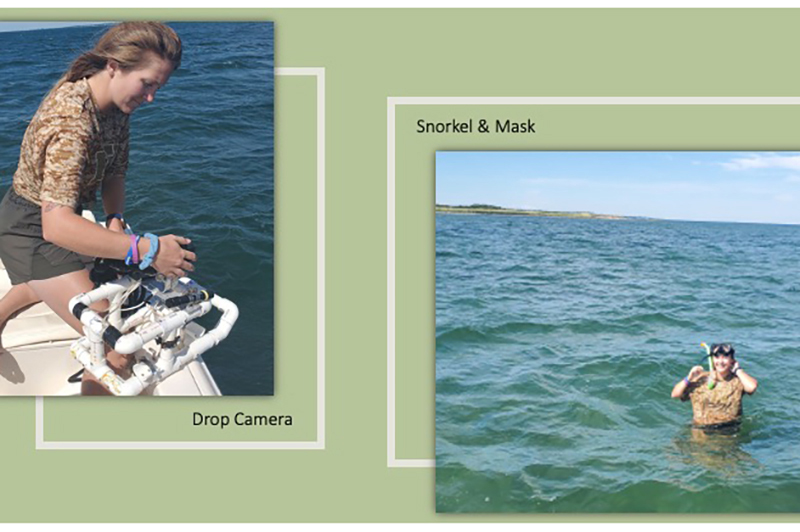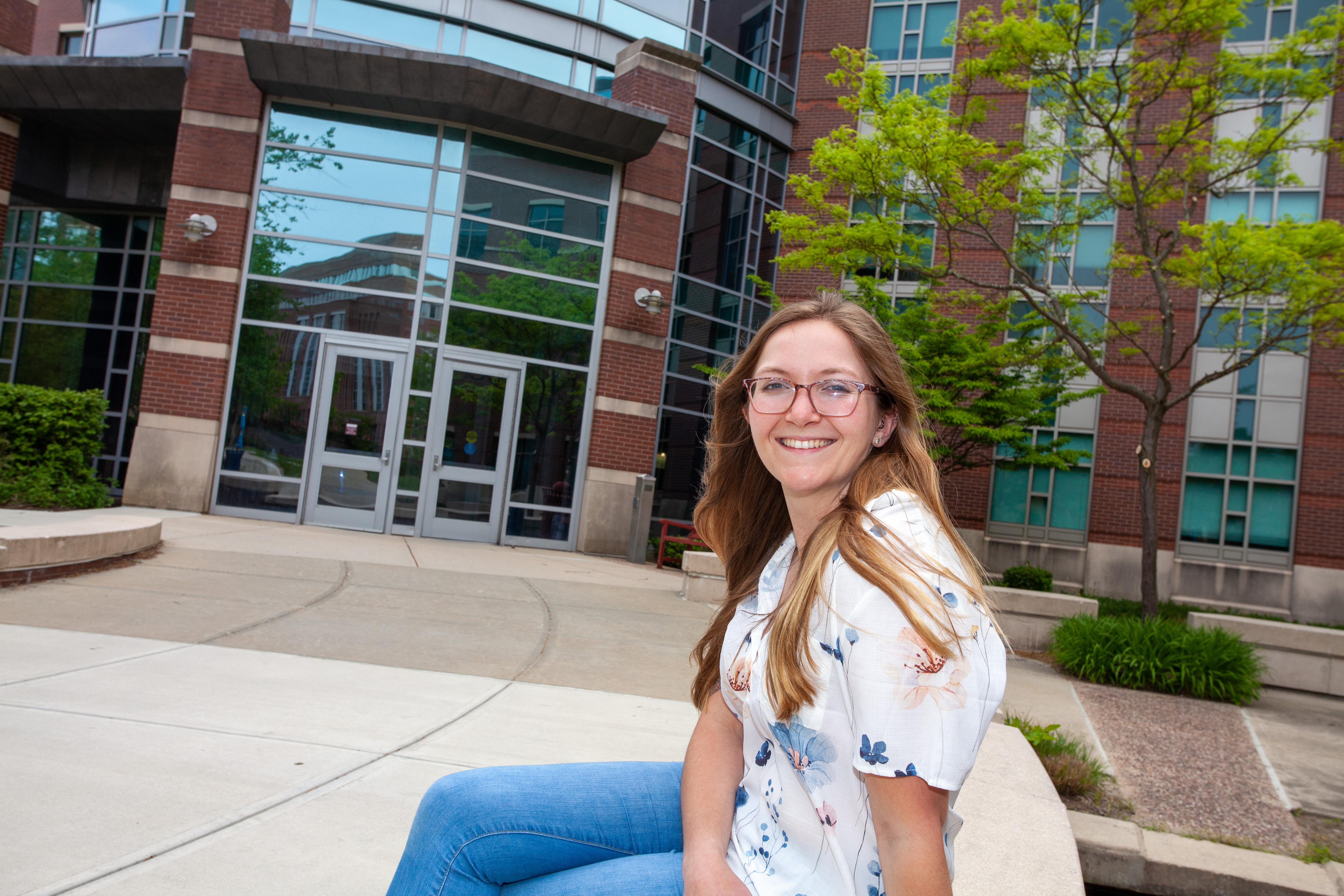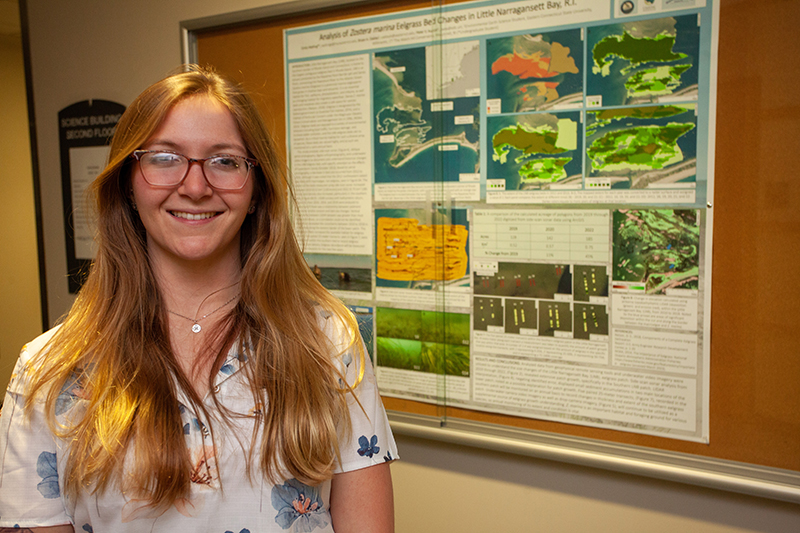- Apply
- Visit
- Request Info
- Give
Eelgrass research wins prize for senior at environmental conference
Written by Lucinda Weiss
Published on May 22, 2023
A recent graduate who majored in environmental earth science at Eastern Connecticut State University won the Rankin Prize for the best undergraduate oral presentation at the recent annual meeting of the New England Estuarine Research Society (NEERS).
Emily Watling’s '23 research was to map and analyze the density of eelgrass, Zostera marina, in Little Narragansett Bay, RI, around Napatree Point. Scientists are studying changes in patches of eelgrass because they are an essential fish habitat — “the mangroves of the Northeast,” as Watling described them.
In recent years, eelgrass growth has been threatened by rising sea levels and building construction along the Long Island Sound. Shoreline flooding and flooded septic systems can cause algal blooms that cut off the oxygen supply to the eelgrass, and higher sea levels can mean that there is not enough light at a depth for growth to flourish, Watling said.
Her research was to look at data back to 2012 to see what changes have occurred, taking into consideration events such as Superstorm Sandy and higher water levels.
“If we start to see more and more flooding, we might see the death of the patch,” she said.
Her work was mentored by Bryan Oakley, professor of environmental earth science. He co-authored her presentation, along with Peter August, president of the Watch Hill Conservancy.

The conservancy and other groups are monitoring the eelgrass patches in various ways — by boat, LIDAR and aerial observations. Watling’s monitoring involved several methods: dragging sonar behind a boat, taking measurement every four feet along a rope attached to shore and even diving with a snorkel and mask to examine the eelgrass.
Watling will be pursuing a master’s degree through the Connecticut National Estuarine Research Reserve at the University of Connecticut-Avery Point, where she will study nutrient output along the Long Island Sound. She hopes eventually to obtain a Ph.D., perhaps in oceanography, she said.
“I’ve always been an environmentalist — since I was a kid,” she said. Watling participated in an FFA program in environmental sciences at Killingly High School and took an AP environmental science course there. She attended Quinebaug Valley Community College before transferring to Eastern.
“In just two years I’ve been able to excel, and they pushed me forward,” she said of her professors in Eastern’s Department of Environmental Earth Science.
She plans to publish her thesis in the Watch Hill Conservancy’s journal. She also presented her research this spring at the Northeast Natural History Annual Conference in Burlington, VT, and received the “Outstanding Environmental Earth Scientist” award from her department at Eastern. She is the third Eastern student to win a prize at NEERS in recent years. Alyson Augenstein '19 won the Warren Prize for best undergraduate poster in 2019 and Jack Cerra '21 won the Rankin Prize in 2021.




